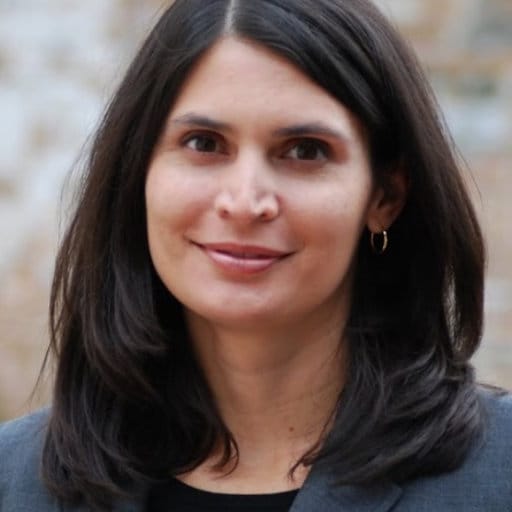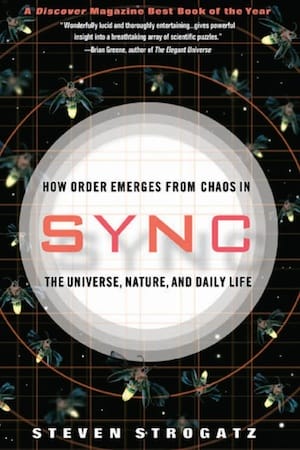
July 17, 2023
Hooray for Monday is a weekly blog filled with questions, ideas, reflections, and actions we can all take to remodel the school experience for students.
Prefer audio? Listen to the Hooray For Monday podcast! Available on your favorite platforms here.
Curiosity, in the classroom and beyond, inspires us to approach things from a place of wonder and interest. At Inspired Teaching, we work to promote the kind of teaching that fuels curiosity, and that means that we make curiosity a central part of our practice, as well.
Earlier this year, we began including “curiosities” – questions or thoughts that are making a member of the Inspired Teaching community say “hmm” – in each Hooray For Monday. We’ve loved the diverse array of contributions we’ve received, and we’ve certainly had our own curiosities piqued, as well!
To expand on this idea, we’re inviting interesting and knowledgeable people from all different fields to talk about the role curiosity plays in their life and work. Through their insights, Hooray For Monday subscribers will discover new ways to tap into their own curiosity and new ideas for how to nurture curiosity in their students.


This week, we hear from Dr. Cecilia Diniz Behn, an associate professor of applied mathematics and statistics at the Colorado School of Mines. Cecilia and Jenna Fournel, Inspired Teaching’s director of teaching and learning, talk about what exactly oscillations are, synchronized fireflies, and the power of exploring the places curiosities intersect. Read the transcript of their conversation (lightly edited for clarity) below!
Cecilia: My name is Cecilia Diniz Behn, and I’m an associate professor of applied mathematics at Colorado School of Mines, and I also have courtesy appointments at the University of Colorado Boulder in Integrative Physiology and at the University of Colorado Medical School in Pediatrics. Like most professors of teaching, research, and service, the summer is our big time for research because a lot of the other obligations around the university sort of slow down over the summer. It’s a time that I spend working with my collaborators and graduate students and really try to move our research forward. The kinds of things that fill my days with that are usually reading lots of articles of other kinds of science that people are doing and thinking about how they relate to the kinds of problems we’re working on. We’re also doing some computer coding for the models that we’re working on, and then I’m meeting with my collaborators and graduate students to talk about those projects.
Jenna: Sounds like that would be work that is fueled by a lot of curiosity, which is what we’re talking with you about today. So, if someone were curious about these intersections between mathematics and biology, what would you recommend they do to start learning more? Where are some places that they could go to start exploring what exactly that means?
C: One of the positives that came out of the pandemic is that people have a lot more awareness of what math can do in biology. Especially the type of math that we work on, which is predictive models and thinking about how can we take data that we know and think about what may happen in the future. We heard a lot about doing that with epidemic modeling and trying to understand what might happen in different scenarios with COVID. There are many other kinds of interesting contexts with that.
I think that there are some good resources online, like the Society for Mathematical Biology. The Society for Industrial and Applied Math has a life sciences activity group that highlights where math might be playing a role in particular areas.
There also are some nice books that I think are very accessible. One of my favorites on that is called Sync by Steven Strogatz at Cornell. And that talks about a lot of things with oscillators, and how synchrony and oscillators manifest in different biological things. This is everything from the types of mathematical neuroscience applications that I think about and the synchronizing of spiking neurons to things like fireflies synchronizing in certain parts of Asia and having this very dramatic kind of flash. And you can find videos of that online that are really interesting to see, that kind of rhythmic synchronous spiking or firing flashing of the fireflies.
J: For those of us who may not use this vocabulary regularly, when you talked about oscillations, what does that mean?
C: An oscillation is something that is varying in some periodic way over time. So, if we think about the calendar year, that’s an oscillation. If we were plotting time of day, we would kind of increase up to noon or maybe increase up to midnight and then decrease down and sort of start over. So it’s something that’s happening cyclically. And so anything that happens cyclically you can think of as an oscillation.
J: Tides would be an example of that, of an oscillation?
C: Yes, tides could be an example of an oscillation. When we think about simple oscillations that you might encounter in math class, it would be like a sine wave or cosine wave. So it’s anything that’s happening periodically. In the firefly example, each firefly is flashing with some frequency. If you were just sitting there with a stopwatch, you could sort of see, when is the firefly going to flash? And then once you determined what that frequency was, then you could predict when they’re next flash was going to happen. The interesting thing that happens in synchrony is when you have many different oscillators that then start working together to do something. In the case of the fireflies, if you looked at each individual firefly, if they were isolated, you could measure this and you would see what their intrinsic frequency was, how often they were regularly flashing. But then if you put them all together, they get this feedback from each other, so then they all change. Then you could say, okay, now all of my fireflies are going to flash at a specific point in time and see the synchronous flashing of all of the oscillators going together.
J: I’m picturing what that looks like now and I’m going to be looking at my fireflies in my backyard. They’re probably not going to do exactly that, but it’d be cool if I saw a couple of them doing it at the same time.
C: It’s a particular species of fireflies that do this kind of synchronous behavior, but it’s really dramatic when you see it. It’ll be like an entire forest that just has this flash of lighting. And sometimes, because you do have that spatial element, if you’re looking at a bigger distance it’s a little bit like it’s doing the wave, like in a stadium. The fireflies are doing that with their flashing across the distance.
J: That is very cool. We’ll link to some videos of that in our show notes so people can see what that looks like. So what you’ve just described right now kind of speaks to this already, but what role does curiosity play in your work?
C: Curiosity is the main thing that drives all researchers and everybody who has the opportunity to really be involved in research. Learning more and new things about the way the world works, or some little aspect of how the world works, is really the motivating factor. So I think that definitely defines what research really is.
J: What are you curious about at this point in time and how are you pursuing that curiosity?
C: In my group, some of the main things that we focus on are mathematical modeling of sleep and circadian rhythms. Circadian rhythms are like the 24 hours-a-day type rhythms that we have and the reason that we sleep at different times. So some of the things that I’m curious about are what goes wrong in the way that different neurons in the brain are working to control your sleep and circadian rhythms in the case of certain sleep disorders like Narcolepsy. I’m also interested, just in general, in how these things change across the lifespan. We kind of think about sleep in a certain way; many of us sleep at a certain time at night. But that can be different if you have a different type of schedule, maybe you have to do shift work that requires you to be awake at times during the night, and then it also changes across the lifespan. If you have an infant, then you know that you’re waking up at all different times because babies don’t only sleep at night. So I’m looking at the whole way that that system that controls all of that sleep timing changes across development and then changes with aging as well. These are things that I’m really curious about.
J: As you’re pursuing that curiosity, is that something that you explore in just people? Do you study it in animals? Do you do sleep studies where people come in and sleep and you watch how they sleep?
C: Oh yeah. So more generally, my group looks at these questions in mathematical modeling of sleep and circadian rhythms. That involves mathematical modeling of metabolism (glucose and insulin dynamics) and then more generally, the theory of networks and what we can understand about the structure of networks and features of networks. And that leads to all different kinds of questions about how these systems work at different times in your life and in the presence of different diseases, like diabetes.
A lot of what we do is try to see: Can we identify small changes, say, in the way that your glucose and insulin profiles interact? That tells us something about the way that your metabolism is functioning and can be really helpful for something like personalized medicine, to know which drugs might be the best drugs to treat you or what kinds of interventions other than pharmacological interventions could potentially be helpful. All of those things are things that we’re curious about.
The lens that we use in addressing this is really mathematical modeling. How can we distill down the key elements of this system and represent them in a model? It’s a constant iterative process because of course, you’re doing simplification as you develop these models, and then you are going back to the data to see: What are the features of the data that I capture? What are the features of the data that I’m not representing very well? And then you try to predict forward to understand, well, what might the effect of this drug be? Or what might we do if, say, there’s a child who was doing fine on a sleep schedule where they were napping every day? But now they’re starting to drop a nap and having all of these difficulties going to bed at night, creating all of this difficulty in the family. How does this really interact with how their physiology is changing and what might be a strategy that you could use? Maybe just changing the timing of bedtime or something that could actually help with that.
J: I think that that research could make a lot of parents very happy! Share a time when your curiosity was piqued when you were a student in school. And as you think about that, did teachers play a role in sparking that curiosity? And if so, how?
C: I think the thing that really jumps to mind for me was when I really first discovered mathematical biology as a field. This is when I was in college and we had talked about this in various examples during class, but I have this vivid memory of taking the final exam and working through these problems on the final exam. There was a question on the final exam that was about blood pressure and it was about modeling blood pressure with this differential equation, and then predicting how blood pressure would change in the presence of different medication and different exercise regimes and things like that.
It really opened my mind to the idea that we could use these equations in a really interesting way. I had been really interested in questions in biology already. I toyed with the idea of being a biology major, but I felt like actually bringing this mathematical perspective to it was going to be the best way for me to make contributions to these questions in medicine that I was really interested in. That’s how I became curious about that topic.
Talking more with that professor and starting to do more research on my own, I eventually found a path that way, coming from more of a pure math background in undergrad. I found my way into the applied math side in graduate school and am able to be working in this field right now.
J: If you could get other people curious about one thing this summer, what would it be?
C: That’s a good question. One of the wonderful things about curiosity is that it manifests so differently in people. And that kind of gives us the amazing breadth of scientific exploration and arts and literature and all of these different things, guided by different kinds of curiosities. It would be interesting for people to find a way to sort of explore that type of curiosity.
I feel like it’s a really interesting experience when you start out as a graduate student and you hear about these narrow fields that people are working in that they’re really passionate about. Because of course, in doing research, you have to be a specialist and you kind of think, how did they know that’s what they liked? Or, how did you find that area? Then it’s very interesting when you kind of go through that process yourself and you’re doing lots of different kinds of math and lots of different types of applications and it kind of comes together in some way that really resonates for you.
So for me, I really like a lot of more abstract geometry and topology kinds of concepts, but I don’t like spending all of my time working on that in the abstract way. There are people who do that kind of thing and have their own curiosities about that. But for me, I’m more interested in using those ideas, in understanding the kinds of systems that I’m modeling: What does this mean about the long-term behavior of complicated systems or things like that?
I try to integrate those things in a way that makes sense for me. Then I can say, oh, yeah, I’m really interested in these geometric methods of analyzing differential equations. That’s sort of a great niche for me in that. It brings these things together and then I apply it in all of these areas of biology. That’s also a great niche for me because it’s another great interest that I have.
Getting other people curious about the intersection of things is the idea that I’m trying to get at because I think where different fields and ideas intersect is where there’s so much potential. So getting people to think about, okay, this is something maybe that I’m interested in and how does this intersect with some other thing?
Hooray For Monday is an award-winning weekly publication by Center for Inspired Teaching, an independent nonprofit organization that invests in and supports teachers. Inspired Teaching provides transformative, improvisation-based professional learning for teachers that is 100% engaging – intellectually, emotionally, and physically. Our mission is to create radical change in the school experience – away from compliance and toward authentic engagement.



